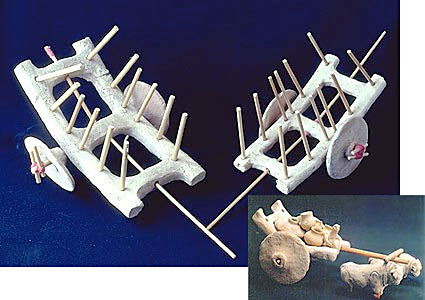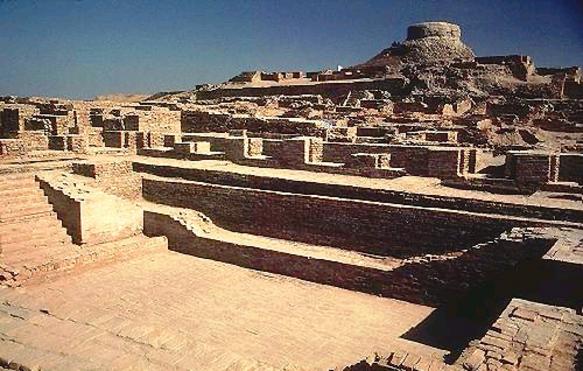Machines at my workplace
Like any typical research work related to simulations, computer is the essential workhorse being employed. In my simulation work, which is mainly a Numerical Simulation of Structural Behavior of Ship Structures, computer performs the numerical calculations amounting to solving thousands of equations, storing millions of numbers and interacting with user, myself in limited stipulated time.
We thus simulate a particular behaviour of a ship structure which would otherwise warrant subjecting actual ship to those particular conditions and thus will be practically unfeasible or too costly.
Etymolgy of "Computer"
The word "computer" was used in 1613 in a book The Young Mans Gleanings by Richard Braithwait. It, then, referred to a person who carried out calculations or computations. The word was used with the same meaning unitll middle of 19th century. From the end of 19th century the word started to take its present meaning which was "a machine" that computes or do the calculations based on a set of instructions at speeds much greater than humans.
The word comes from verb "compute (v.)". The word means "calculating machine" (of any type) from 1897; "programmable digital electronic computer" form 1945.
Clucth Pencil
My Clutch Pencil
I use clutch pencil quite often in my work and I am quite use to it that I cannot imagine myself working without one. The sleek handy machine affords neat lines useful in any visualization work.
Etymology of "Clutch Pencil"
"Clutch Pencil" also known as "mechanical pencil" is a seemingly simple machine whose invention and development is spread over decades. Its main purpose is to draw thin and sharp lines without the need to sharpen the nib.
1822: Invention
In 1822, Sampson Mordan and Gabriel Riddle invented and patented the first known mechanical pencil. The device was a refillable lead holder rather than todays sophisticated version of today. Its frequent user would require to carry carry uniform pieces of lead in their pockets.
1860: Faber
In 1860, a German named A.W. Faber invented a more advanced model to help drafters in architecture. Faber, an already renowned maker and manufacturer of writing utensils designed a holder that was more hollow and allowed for a longer lead to be fitted. A year later, Faber invented and patented the twist locking-clutch mechanism.
1862-1899: Upgrades and Improvements
Later part of the 19th century saw many small upgrades in pencil. To mention a few were spring-loaded pencil developed in 1877 and the twist-feed mechanism which was introduced 1895. Still it differed from its present form.
1915: A "Sharp" Pencil
In 1915, two men in two different countries came out with designs that would change the mechanical pencil forever. Tokuji Hayakawa, in Japan, implemented the use of a metal shaft, a screw-based mechanism, and sharp lead. Following an initial sluggish response, the Japanese design became poplar world-wide. The "Hayakawa mechanical pencil" was patented and marketed as the "screw pencil" or "propelling pencil". The mechanical pencil was named "Ever-Ready Sharp Pencil," later simply the "Ever-Sharp Pencil". This name was later carried by the same company now well-known as "Sharp Corporation".
At the same time in the United States, a man named Charles Keeran from Illinois designed a ratchet-based mechanism in which the lead is held by two or three jaws at the tip of the pencil. The user could then press a button with their thumb at the opposite end and push the lead forward as the momentarily separate.
Stapler
Etymology of "Stapler"
Mechanical device for bending staples and driving them through a bundle of papers to join them. The staples are metallic pins with pointed ends
The first known stapler was made in the 18th century in France for King Louis XV. Each staple was inscribed with the insignia of the royal court, as required. The growing uses of paper in the 19th century created a demand for an efficient paper fastener.
"Paper Fastener" to "Stapler"
In 1866, George McGill got his design patented as "Paper Fastener" for a small, bendable brass paper fastener that was a precursor to the modern staple.
Henry R. Heyl (1877) is considered inventor of the modern stapler because he came up with a design that worked both inserting and clinching a staple in one step.
In the early 1900s, several devices were developed and patented that punched and folded papers to attach them to each other without a metallic clip. The "Clipless Stand Machine" (made in North Berwick) sold from 1909 into the 1920s. It cut a tongue in the paper that it folded back and tucked in. Bump's New Model Paper Fastener used a similar cutting and weaving technology.
The first published use of the word "stapler" to indicate a machine for fastening papers with a thin metal wire was in an advertisement in the American Munsey's Magazine in 1901.


